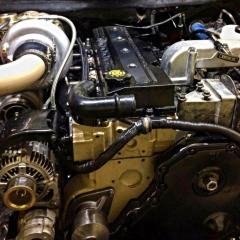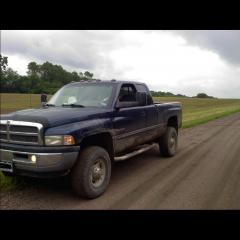- Replies 39
- Views 6.6k
- Created
- Last Reply
Top Posters In This Topic
-
rogerash0 10 posts
-
dave110 6 posts
-
Mopar1973Man 5 posts
-
Dynamic 4 posts
Most Popular Posts
-
There's three clicks to seating a converter. Be sure to fill it about a quart of fluid while spinning it on the ground before installing.
-
Yes, when you're installing the converter you're lining up three things; the input shaft to the turbine hub, the stator support to the stator, and the inner pump gear to the converter hub. Whether you
-
I've had mine out both with and without the transfer case. Unless you have a real jack I would separate them. It's alot of teeter totter and weight when they are together. Keep in mind though I have t





Anyone have good advice for dropping the trans? Ive read the truck needs to be on jack stands to fit the tranny out. Some guys say seperate the transfer case, other guys say not to. My thoughts are keep them together, get the truck up a few inches on jack stands, get a harbor freight transmission jack because I can get it here & now, and go to town.
It's the little details like a double click of the converter, not hurting any seals as I slide it on, and/or anything else I may not know about. I'd rather not mess anything up. I do have the big factory service manuals here I will read first, but I thought maybe someone here could share some insight. I've never dropped a trans before. Im planning on swapping converters.
Also, my thoughts are doing it at home because all my tools are here. But for about $8/hr on the air force base I can have a proper stall with the truck in the air and work under it, and use their transmission jack instead. Do you guys think that's worthwhile? My thoughts are have the truck at home in case I run into any issues, plus I can make lunch here, take my time, work at night outside their hours, etc,etc.
thanks
edit; would jlbayes or Dynamic know of a spring I could put in my valve body to make first gear shift higher? Lavon said I should have green springs in there (tv,1-2 and 2-3), which are already the higher rpm shifting springs, so am I SOL?
Edited by rogerash0